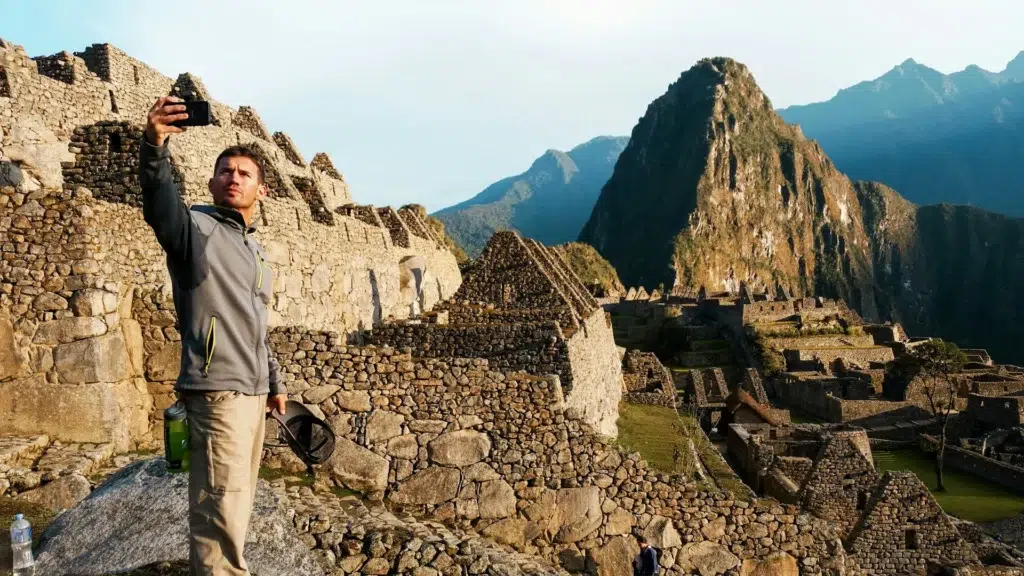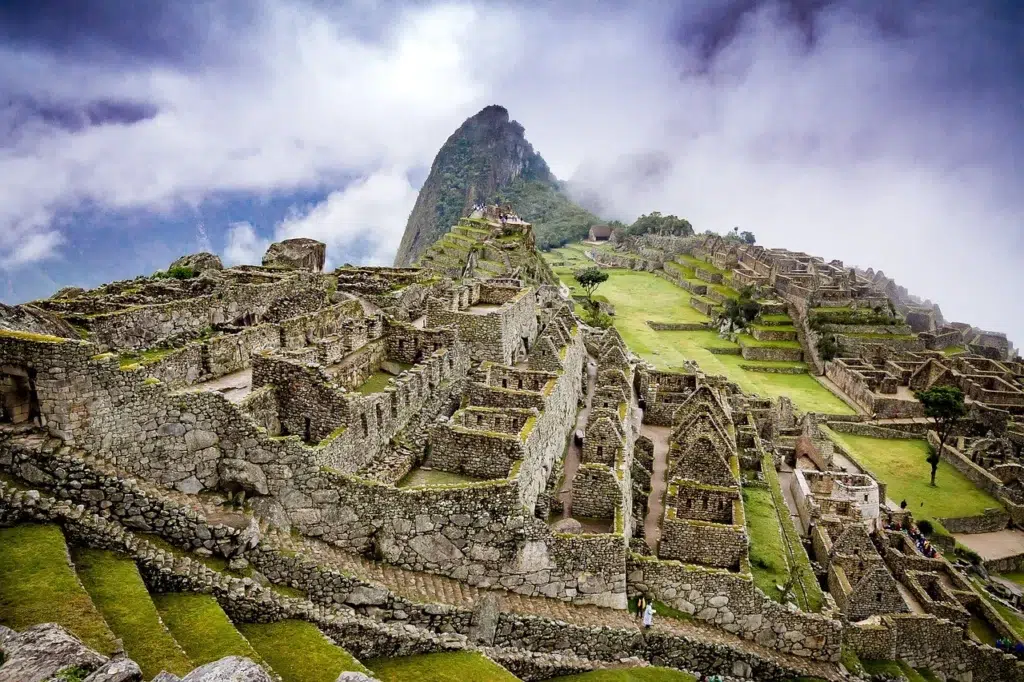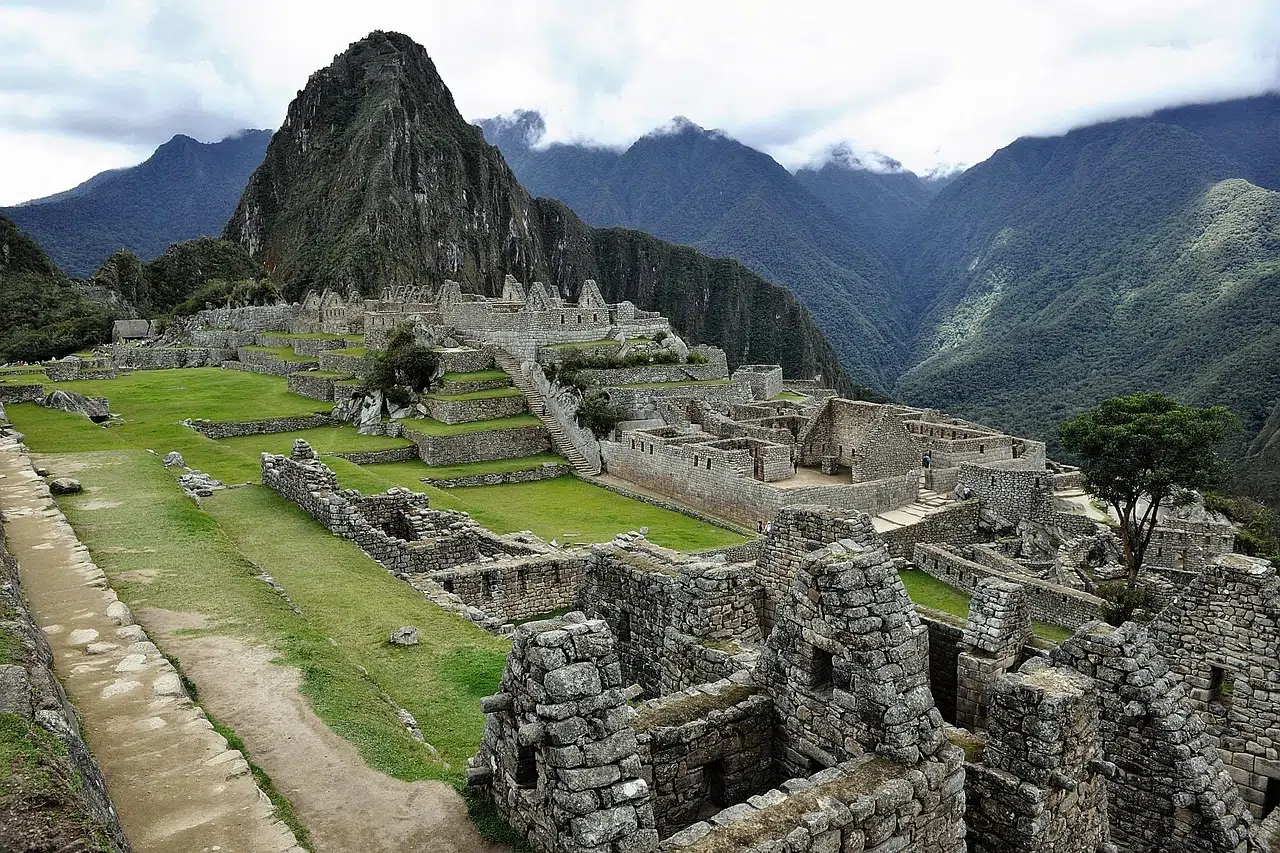The Inca Trail to Machu Picchu is one of the most iconic and sought-after hiking adventures in the world. Every year, thousands of travelers from all corners of the globe embark on this ancient path, drawn by the allure of history, breathtaking landscapes, and the mystical ruins of Machu Picchu. If you’re planning to hike the Inca Trail, you’ve come to the right place. This ultimate guide will walk you through everything you need to know to prepare for your journey, based on insights gathered from the top resources available online.
What is the Inca Trail?
The Inca Trail is a 26-mile (42-kilometer) network of ancient pathways that wind through the Andes Mountains, leading to the legendary citadel of Machu Picchu. Built by the Incas over 500 years ago, this trail was once a vital route for communication, trade, and pilgrimage. Today, it’s a bucket-list adventure for hikers worldwide, offering stunning landscapes, archaeological sites, and a deep connection to history.
Quick Facts About the Inca Trail
- Length: 42 km (26 miles)
- Duration: Typically 4 days, but shorter and longer variations exist
- Highest Altitude: 4,215 m (13,828 ft) at Dead Woman’s Pass
- Difficulty: Moderate to Challenging
- Permit Required: Yes (limited availability)
- Best Time to Hike: Dry season (May–September)
Why Hike the Inca Trail?
Hiking the Inca Trail isn’t just about reaching Machu Picchu—it’s about the journey itself. Along the way, you’ll encounter:
- Breathtaking Scenery: From lush cloud forests to rugged mountain passes, the trail offers diverse landscapes.
- Ancient Ruins: Discover lesser-known Inca sites like Wiñay Wayna and Runkurakay.
- Cultural Immersion: Learn about the history and traditions of the Inca civilization.
- Personal Achievement: Completing the trek is a physical and mental challenge that leaves you with a profound sense of accomplishment.
The Inca Trail is more than just a hike; it’s a journey through history and nature. Here’s why thousands of trekkers choose this route over other alternative routes to Machu Picchu every year:
✅ Access to Exclusive Inca Ruins – The trail passes through archaeological sites inaccessible by train or bus.
✅ Stunning Landscapes – Trek through cloud forests, high-altitude passes, and subtropical jungles.
✅ The Sun Gate Experience – Witness a breathtaking sunrise at Machu Picchu from the Inti Punku (Sun Gate).
✅ Sense of Accomplishment – Completing the trek is a rewarding personal achievement.
Inca Trail Routes: Which One is Right for You?
There are several routes to Machu Picchu, but the Classic 4-Day Inca Trail is the most popular. Here’s a breakdown of the options:
- Classic 4-Day Inca Trail: The most iconic route, covering 26 miles over four days. It includes Dead Woman’s Pass, the highest point at 13,828 feet (4,215 meters).
- 2-Day Inca Trail: A shorter option for those with limited time or who prefer less strenuous hiking.
- Salkantay Trek + Inca Trail: A longer, more challenging route that combines the Inca Trail with the stunning Salkantay Mountain.
- Lares Trek + Inca Trail: A cultural alternative that passes through traditional Andean villages.
Why Choose the Inca Trail?
Before diving into the logistics, let’s talk about why the Inca Trail stands out as a must-do adventure. Unlike other treks, the Inca Trail combines stunning natural beauty with rich cultural and historical significance. As you hike, you’ll traverse diverse ecosystems, from lush cloud forests to high-altitude mountain passes, while passing by ancient Incan ruins that tell the story of a once-thriving civilization.
Key reasons hikers choose the Inca Trail include:
- Cultural immersion: Walking in the footsteps of the Incas offers a unique connection to their history.
- Scenic diversity: The trail showcases Peru’s incredible biodiversity, from tropical jungles to snow-capped peaks.
- Machu Picchu as the grand finale: Reaching the Sun Gate (Inti Punku) and seeing Machu Picchu for the first time is an unforgettable experience.
Inca Trail Weather: Best Time to Hike
The Inca Trail is open year-round, but the best time to hike is during the dry season (April-October). Here’s a breakdown of the weather:
- Dry Season (April-October): Clear skies, sunny days, and cooler nights. Peak season is June-August.
- Wet Season (November-March): Heavy rains, muddy trails, and fewer crowds. The trail closes in February for maintenance.
Inca Trail Tours: Choosing the Right Company
Selecting a reputable tour operator is crucial for a safe and enjoyable experience. Look for companies that:
- Are licensed by the Peruvian government.
- Treat porters fairly (check for certifications like Responsible Travel).
- Offer small group sizes for a more personalized experience.
- Provide detailed itineraries and transparent pricing.
Some top-rated companies include G Adventures, Alpaca Expeditions, and Llama Path.

Inca Trail Highlights: What You’ll See Along the Way
The Inca Trail is more than just a hike—it’s a journey through history and nature. Here are some highlights:
- Dead Woman’s Pass: The highest point on the trail, offering panoramic views.
- Wiñay Wayna: A stunning Inca site with terraces and waterfalls.
- Inti Punku (Sun Gate): The iconic entrance to Machu Picchu, best seen at sunrise.
- Machu Picchu: The grand finale, where you’ll explore the ancient citadel with a guided tour.
Tips for a Successful Inca Trail Hike
- Train in Advance: Build your endurance with regular hikes and cardio workouts.
- Acclimatize: Spend a few days in Cusco or the Sacred Valley before starting the trek.
- Stay Hydrated: Drink plenty of water to combat altitude sickness.
- Pace Yourself: Take it slow, especially on steep sections.
- Respect the Trail: Follow Leave No Trace principles and respect local customs.
Inca Trail Permits: How to Secure Your Spot
One of the most critical aspects of planning your Inca Trail hike is securing a permit. The Peruvian government limits the number of hikers to 500 per day (including guides and porters), so permits sell out quickly, especially during peak season (May-September).
- When to Book: Permits are released in October for the following year. Book at least 6-8 months in advance.
- How to Book: Permits can only be obtained through licensed tour operators. Research reputable companies like G Adventures, Alpaca Expeditions, or Llama Path.
- Cost: Permits cost around 70−70−100, but full tour packages (including guides, porters, and meals) range from 600to600to1,500.
Inca Trail Difficulty: What to Expect
The Inca Trail is considered a moderate to challenging hike due to its high altitude, steep ascents, and uneven terrain. Here’s what you need to know:
- Altitude: The trail reaches elevations of up to 13,828 feet (4,215 meters). Acclimatization is crucial—spend at least 2-3 days in Cusco before starting the trek.
- Distance: The Classic 4-Day Trail covers 26 miles (42 kilometers), with daily hikes ranging from 6 to 9 hours.
- Terrain: Expect a mix of stone steps, dirt paths, and steep inclines. The most challenging section is Dead Woman’s Pass on Day 2.
Inca Trail Elevation, Altitude, and Difficulty
Highest Points on the Inca Trail
- Dead Woman’s Pass: 4,215 m (13,828 ft) – Highest and most difficult point.
- Runkurakay Pass: 3,950 m (12,959 ft)
- Sun Gate (Inti Punku): 2,720 m (8,924 ft)
Difficulty Level: Moderate to challenging – proper training and acclimatization are essential.
More Information

Inca Trail Guided vs. Self-Guided: Which is Better?
Guided Trek: Required by Peruvian law, includes permits, porters, food, and expert guidance.
Self-Guided Trek: Not allowed due to conservation laws.
Cost of Hiking the Inca Trail
- Budget Tours: $600–$800
- Mid-Range Tours: $900–$1,200
- Luxury Tours: $1,500+
More Information
Planning Your Adventure: Essential Tips
1. Permits and Booking Early
One of the most critical aspects of planning your Inca Trail hike is securing a permit. The Peruvian government limits the number of hikers to 500 per day (including guides and porters), making permits highly competitive, especially during peak seasons like May to September.
Based on research from top hiking websites, it’s recommended to book your permit at least 6 months in advance. Many tour operators handle the permit process for you, so choosing a reputable company is crucial. Look for keywords like “Inca Trail permits,” “booking early,” and “authorized tour operators” when searching for reliable providers.
2. Choosing the Right Tour Operator
Not all tour operators are created equal. When selecting a company, prioritize those that are sustainable, ethical, and prioritize the well-being of their staff, particularly porters. Keywords like “eco-friendly tours,” “porter welfare,” and “certified guides” are often used by trusted operators.
Ask potential companies about:
- Their porter treatment policies.
- Group sizes (smaller groups offer a more intimate experience).
- Included amenities, such as meals, camping gear, and transportation.
3. Best Time to Hike
The best time to hike the Inca Trail is during the dry season, which runs from May to September. During these months, the weather is generally sunny during the day and cool at night, with minimal rainfall. However, this is also the busiest time, so expect larger crowds.
If you prefer fewer people and don’t mind a bit of rain, consider hiking during the shoulder months of April or October. Avoid the rainy season (November to March), as trails can become slippery and dangerous.
Preparing for the Hike: What You Need to Know
Physical Preparation
Hiking the Inca Trail is no walk in the park. The classic route spans approximately 26 miles (42 km) over four days, with significant elevation changes. Day two, in particular, involves a challenging climb to Dead Woman’s Pass (Warmiwañusqa), which sits at 13,828 feet (4,215 meters).
To prepare, focus on building cardiovascular endurance and leg strength. Incorporate activities like:
- Long-distance hikes with a loaded backpack.
- Stair climbing to simulate steep ascents and descents.
- Altitude training if possible, or spend a few days acclimatizing in Cusco before starting the trek.
Packing List for the Inca Trail
Packing smart is key to enjoying your hike. Here’s a list of essentials based on recommendations from top hiking resources:
- Clothing: Layered clothing is essential due to fluctuating temperatures. Pack moisture-wicking base layers, a warm fleece, a waterproof jacket, and sturdy hiking boots.
- Gear: A good-quality sleeping bag rated for cold temperatures, a headlamp, trekking poles, and a daypack.
- Personal Items: Sunscreen, insect repellent, a reusable water bottle, and snacks like energy bars.
- Health Supplies: Altitude sickness medication (e.g., Diamox), a basic first-aid kit, and any personal medications.
Pro tip: Look for keywords like “Inca Trail packing list” and “essential gear” to find detailed checklists tailored to this specific trek.
Understanding the Itinerary
The classic Inca Trail itinerary spans four days and three nights. Here’s a breakdown of what to expect each day:
Day 1: Cusco to Wayllabamba
- Distance: ~7.5 miles (12 km)
- Highlights: Start your journey at Km 82, where you’ll cross the Urubamba River and pass through quaint villages and agricultural terraces.
- Difficulty: Moderate, with a gentle ascent.
Day 2: Wayllabamba to Pacaymayo
- Distance: ~7.5 miles (12 km)
- Highlights: Conquer Dead Woman’s Pass, the highest point of the trek, and enjoy panoramic views of the surrounding mountains.
- Difficulty: Challenging due to steep climbs and high altitude.
Day 3: Pacaymayo to Wiñaywayna
- Distance: ~9.3 miles (15 km)
- Highlights: Explore several archaeological sites, including Runkurakay and Sayacmarca, and descend into lush cloud forests.
- Difficulty: Moderate, with a mix of ascents and descents.
Day 4: Wiñaywayna to Machu Picchu
- Distance: ~4.3 miles (7 km)
- Highlights: Arrive at the Sun Gate just in time for sunrise and marvel at the majestic ruins of Machu Picchu.
- Difficulty: Easy, with mostly downhill walking.
Alternative Routes and Options
If the classic Inca Trail feels too crowded or challenging, there are alternative routes worth considering:
- Salkantay Trek: A less crowded option that offers equally stunning scenery but bypasses Machu Picchu until the end.
- Lares Trek: Known for its cultural immersion, this route takes you through traditional Andean communities.
- Short Inca Trail: A two-day option ideal for those short on time or seeking a less strenuous experience.
Keywords like “alternative treks to Machu Picchu” and “short Inca Trail options” can help you explore these alternatives further.
Final Thoughts: Embrace the Journey
Hiking the Inca Trail is more than just a physical challenge—it’s a transformative experience that connects you with nature, history, and yourself. By preparing thoroughly, choosing the right operator, and respecting the environment, you’ll ensure a memorable and rewarding adventure.
As you stand at the Sun Gate, gazing upon the awe-inspiring ruins of Machu Picchu, you’ll realize that every step was worth it. So lace up your boots, pack your sense of adventure, and get ready to create memories that will last a lifetime.



